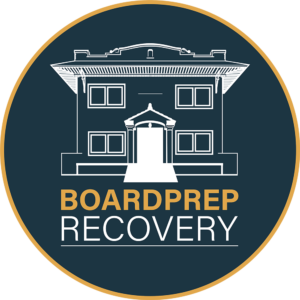[Note to Reader: This is “Part One” of a 2-part blog-post—“Part Two” will appear later this week.]
According to a recent study by Drs. J. Lyden and I. Binswanger, America’s opioid epidemic has become a nationwide public health crisis. And it is not limited only to the abuse of prescribed pain medication. “Initially driven by increased consumption and availability of pharmaceutical opioids, an increasing number of opioid overdoses are now related to heroin and illicitly manufactured fentanyl.”[1]
For many who seek recovery from opiates, two of the most fear-inducing situations are withdrawal and detox. The phrase opiate detox generally refers to the process of ridding the body of opiates and the toxins associated with these drugs by abstaining from opiate use and allowing time for withdrawal.
While going “cold turkey” (abruptly stopping on your own) can be done, it can be dangerous and even deadly — cardiac arrest and severe respiratory issues can arise unexpectedly.[2] Medically supported detox, which most addiction treatment centers offer, can provide a safer, more comfortable process for the recovering person. However, if you’re addicted to opiates such as heroin, Oxycontin, Vicodin, oxymorphone, morphine, codeine or fentanyl, it’s necessary to go through a period of detox in order to get clean and remain clean.
Why is detox necessary? Over time, the use of opiates causes toxins to build up in your body and negatively affect your health. These toxins harm your body’s organs, tissues and other systems, resulting in a wide range of health problems.
Certainly, the decision to begin detox from opiates is an important one, which can lead you not just to freedom from dependence on the drugs, but also greatly improved health, increased well-being and restored positive relations with family, friends and work associates.
What are some of the main symptoms of opiate withdrawal?
The severity of your symptoms will largely depend on the dosage of opiates you were using and how suddenly you’re coming off the drug. The type of opiate also affects the symptoms you’ll likely experience. Short-acting opiates, such as heroin, can produce more intense symptoms in a shorter time frame, whereas long-acting opiates, such as methadone, can take from 24-30 hours from the last dose to cause any symptoms.
Generally speaking, though, within several hours after the last dose, withdrawal symptoms start to occur, as a result of your body’s detoxification from the drug. Based on an article in Medical News Today (Sept. 2 2019)[3], common symptoms include:
- aching muscles
- stomach pain
- anxiety or agitation
- increased heart rate
- fever and chills
- nausea and vomiting
- diarrhea
- depression
- tremors
Per the author, however, your symptoms can be mild or severe and may depend on your:
- overall health, including any medical conditions
- history of drug use, including the extent and duration
- current environment (for example, how stressful or supportive it is)
- family history of addiction[4]
A Timeline of Opiate Withdrawal
Given that some withdrawal symptoms last longer than others, the timeline below—provided by Ryan Kellye, former managing editor of the Journal of Emergency Medical Services—indicates what you can expect to experience in the week after you stop taking opiates:
“6–12 hours or 30 hours after the last dose
People who have been taking short acting opiates will start experiencing symptoms 6–12 hours after their last dose. People who have been taking long acting opiates may experience symptoms after 30 hours.
These initial symptoms may include:
- muscle aches
- a runny nose
- difficulty sleeping
- excessive yawning
- anxiety
- increased heart rate
- sweating
- fever
- hypertension
72 hours after last dose
Symptoms will be at their most intense 72 hours after a final dose, and they can last for a week or more.
Late withdrawal symptoms can include:
- diarrhea
- vomiting
- nausea
- cravings for opiate drugs
- stomach pain
- depression[5]
Given the psychological symptoms and cravings for opiates can last for longer than a week, it’s safest (and wise) to get the support of a team of healthcare professionals—available at most any addiction treatment center—who can help you through whatever withdrawal symptoms arise.
According to Kellye, if you choose to do an opiate detox under medical supervision, you’ll typically experience symptoms for 5 – 7 days.[6]
In “Part Two” of this 2-part blog-post, we’ll take a closer look at treatment options for detoxing from opiates.







